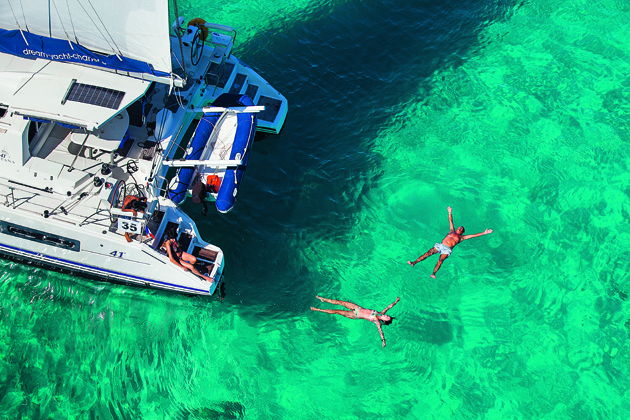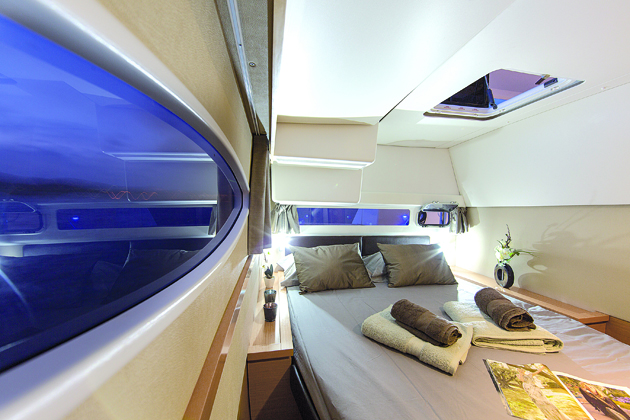Over the past few years there has been a growing trend for owners to choose a multihull for bluewater cruising. What is going on? Toby Hodges investigates
The seed is sown; no longer are you looking at multihulls as a ‘floating caravan’ as purists once considered them to be, but as a viable cruising option for you and your family. And you are far from being alone.
Multihulls – and catamarans in particular – are becoming increasingly popular among cruisers. If you take the Atlantic Rally for Cruisers (ARC) as an example, in 2010 there were 14 multihull entries, but by last year’s ARC there were 36 and numbers are growing.
Which is why we have introduced an eight-part series on Catamaran Sailing Techniques by multihull designer and experienced multi sailor Nigel Irens, in partnership with marine insurance specialist Pantaenius.
In it Irens considers aspects of handling, safety and coping with heavy weather from the viewpoint of a long-term monohull sailor new to catamaran sailing. Each part is accompanied by a free instructional video.
New-style cats
The looks, performance and handling of cruising catamarans has improved dramatically over recent years. Gone are the quirky-looking old-style catamarans that dominated cruising cat design for decades. Cats are now opulently spacious with incomparable views, and can be slippery and stylish too.
A number of sailors, if they’re honest, prefer to charter a catamaran rather than a monohull for the living space it provides. It is the reason why charter fleets are gradually being populated by cats. And once they’ve tried one out on a charter, many become hooked. It is small wonder that multihull converts rarely switch back to monohulls.
Performance gains
But it’s not only about space. The whole ethos of multihulls has changed. They are actually hip these days; whether floating, fetching or foiling, multihulls are where it’s at. From the Tour de Voile’s new 24ft trimarans, to stadium events involving yachts such as the GC32s, Extreme 40s and AC45 World Series, right through to ocean record-setters, multihulls are the elite choice for grand-prix racing. They represent the pinnacle of our sport, and are the playthings of wealthy sailors seeking an adrenalin buzz.
With performance comes better handling and style. These are the trickle-down benefits we’re currently seeing aboard cruising cats – the Gunboat factor, if you will. Moving down to the more mainstream end of the sailing market, we are seeing a rise in the number of performance cruising cats from manufacturers such as Catana and Outremer, and compact multihulls like Dragonfly and Corsair.
These are all good choices – yachts with high speed capability, high aspect rigs and performance features such as lifting asymmetric boards, and ones I would get more excited about sailing than many production monohulls.
There has also been an improvement in the speed, styling and handling ability of catamarans built in series production – those charter-style family cruisers that offer maximum space. This is arguably the only market in yachting that has continued to grow throughout the recession.
Learning from experience
But what about those of you looking for the next yacht to take you bluewater cruising? If you have an eye on the ARC or maybe even a circumnavigation you might well be considering whether a monohull is still the boat for you. Are you considering a multihull?
We spoke to a variety of skippers who have lived aboard and cruised catamarans for years. Some are multihull enthusiasts through and through, others were recent converts from monohulls (see below).
Kevin and Jane Rush, for example, were lifelong monohull sailors who bought a Leopard 44 catamaran when they both retired two years ago and decided to head off long-term cruising.
“We wanted to have extra space, ease of living and be ‘above the waterline’ without moving to a boat that was larger than we could comfortably manage as a couple,” explains Kevin. “The most important point for us is that, even after 30 years of monohull sailing, my wife still suffered from seasickness at times when the boat was heeling over. So the stability and above-water aspects [of a catamaran] were huge contributors to getting her agreement to do longer distance cruising.”







